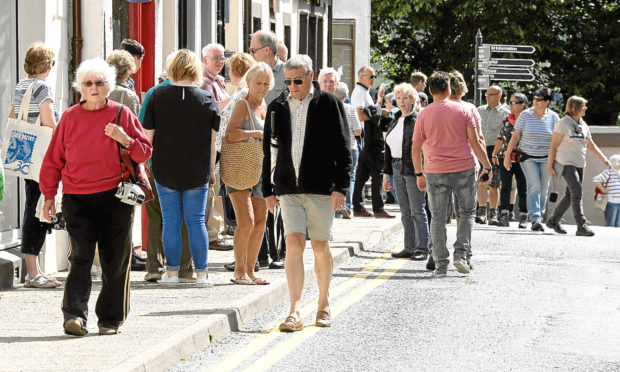By any standards, they are major success stories in the ever-demanding tourism sector.
Loch Ness will always be the reliable backbone of the industry in the north, and Aviemore gives us a reason to stay open in the winter – but Skye has come into its own as a visitor magnet and that new kid on the block the North Coast 500 is elbowing its way to record numbers of tourists.
But although there are many obvious benefits to being a must-visit destination, the soaring number of visitors to the Highlands and Islands – while boosting the economy by millions of pounds – is causing a major headache by putting increased pressure on infrastructure in the very same picturesque hotspots that make Skye and the NC500 irresistible.
The conundrum has led to calls for more investment from the Scottish Government and Highland Council – and even talk of a controversial tourist tax.
Some residents have even claimed that they don’t want any more tourists as the infrastructure can’t cope.
While an announcement was made last week by the Scottish Government that £6million was being directed to aid the problem, this is to be divided across the country and many claim it is just a drop in the ocean and nowhere near enough to improve infrastructure where it is most needed.
Donnie MacRae, who runs Ewen MacRae West End Garage in Portree, said he is dealing with over 300 call-outs a year, the majority being hired campervans damaged or stuck on single track roads at popular attractions.
He said: “We need to get ahead of the game before we get a bad name for tourism.
“I don’t like hearing people criticise tourists and saying we can’t cope with them coming. We need to nurture our tourist industry. We have to look after them because Skye can’t be without tourists. We all depend on tourism.
“Highland Council and the Scottish Government need to invest to bring us up to standard. It is not just the single track roads with potholes and crumbling verges, but parking and the lack of facilities such as toilets.”
Further north, the almost instant success of the NC500 route has caused a split in the northern Highlands between those within the tourism sector enjoying a boom and others who claim the rise in vehicles is causing major problems to locals. James Keith, owner of Durness Caravan Park, said: “The number of visitors has increased a huge amount in the last couple of years. For the first time ever we have been turning people away because we have been full.”
But he also cited tales of convoys of five or six campervans meeting on a single track road, adding: “Traffic can sometimes be travelling at just 20mph, which is causing frustration among locals.”
Susan Malone, who runs the Bettyhill Merchant Shop along the NC500 route, said: “As a business we are benefiting.
“There are certainly more people coming through the door and we are selling much more fuel in the summer than ever before. However, it is causing major problems on the roads.
“Care workers are struggling to get all their visits in because they are being delayed by tourists driving slowly on the roads.
“The local policewoman was stuck behind a camper van when rushing to get somewhere. She had the blue lights on but they would not pull in.
“And the Coastguard has also been held up by campervans. It could cost lives.”
A Highland Council spokeswoman said: “Clearly the popularity of tourist destinations on Skye and the NC500 has had an impact on road condition in these areas, particularly along the single track stretches.
“We have received requests from communities for more passing places and other improvements to infrastructure to be provided to cope with the increased usage.
“It is proving difficult for these requests to be met from the existing resources available. Highland Council’s budget for roads is fully committed with priority being given to maintaining the roads in a steady state of condition.”
A Scottish Government spokesperson said: “The Rural Tourism Infrastructure Fund is expected to launch early next year.
“It will be administered by public sector partners, working with local authorities with input from communities and the tourism industry.”
Comment, Page 25
